Beginning
The history of Atelier 35 was written with many beginnings. The more attempts to recover a subject, the more complex are the next initiatives. The route requires revisiting the past in terms already chosen, and previous perspectives must meet the bifurcations of current hypotheses. Atelier 35, an artistic reality whose aura frequently attracts recovery initiatives, becomes a subject-cluster to which we can strangely delimit a period in the history of Romanian art between the 60s and the 90s and diffuse its persistence in time after the 2000s. The existence of that space today, in a formula vaguely recognizable from the initial one, seems to exclude its integration, or at least its juxtaposition, with its previous aspects.
(The) Atelier 35
The definite article attached to the noun indicates, independently of Romanian grammar, a temporal placement. Atelier 35 is a persistent construction in communication with the generations who remember the names of Ion Nicodim and Wanda Mihuleac and who knew the space in its artistic cenacle formula. The name of the cenacle was an intuitive choice, vaguely defining the intentions of its establishment in the 60s. Followed by the numerical index referring to the ultimate threshold of youth, the noun atelier suggests a processual attitude, appropriate for the younger generation. Although the platform was created within the Union of Fine Artists, its loose structure did not require membership. The difficulty of joining the Union became increasingly evident in the mid-1980s and, in addition to the political elements required for membership[1], mobility, and exhibition opportunities were limited for young artists. Atelier 35 was the space-platform in which the exhibition highlights from the files of the artists who joined the UAP as youngsters were organized, but also the host space for those who passed the numerical criterion of youth but did not become members.
Irrespective of who was in charge of the designated operative, over the years many artists from close generations have gathered around the Atelier. With hindsight, the content of the exhibitions has been defined in terms of common, generational attitudes, legitimizing the use of terms that superimpose temporal notions with artistic manifestations. Magda Cârneci’s article published more than 10 years ago[2], begins with a blatant passage: “A certain cultural mythology has been created around the idea of the pre-1989 Atelier 35 among the young generation of artists after 2000”. The myth of Atelier 35 persists today with more or less similar vibrancy, and its ghostly resilience has been preserved precisely by its tenacious presence on the art scene. At present, Atelier 35 is processing the signs of the fragmentation and volatility enveloping contemporary art institutions, without primarily exploring the possibility of reconsidering its current status. On the one hand, there is an emblematic image of Atelier 35 before 1989 and a potential situation of Atelier 35 afterward, awaiting a precise definition.
Build a common situation with no future: Atelier 35 Bucharest
Atelier 35, when not facing the past, becomes a space for the accumulation of independent (or private) initiatives, of fragile artists with divided visions about belonging to the UAP and of solo shows. In a significant proportion, the accelerated exhibition program easily gets lost in the inertia of superficially treated works and proposes projects here and now, without promising to open a dialogue about the content it throws unpacked to the public. The content of the images conveyed by young artists has a pronounced personal charge, in which the sometimes individualistic experience and one’s sensibilities are more important than questioning visual media. Loosely, there are exhibition projects that nuance through research the volatile aspects of visuality marked by trends taken from uncritical sources. Understanding the visual and the visible in such cases does not fall into the trap of interpretive recipes without negotiating juvenile fragilities and shaping the split realities of contemporary art.
“Build a common situation without a future: Atelier 35 Bucharest” is a long-term project that abandoned the pretense of an exhaustive approach, staging a plausible framework for revisiting the history of Atelier 35 Bucharest with intergenerational participation. As a research project, it followed the status, functioning, and working practices that materialized around Atelier 35. The researched subject expanded like tentacles from the ambition to engage several anachronistic agents in the process of recuperation and thus its possible iterations were tentatively brought together by the conceptual format of “situation”.
To realize Situation 1, Daria Nedelcu and Cyrill Lim set up a laboratory for assembling and reassembling their research materials. The storage space of Atelier 35, an annex not intended for the display of works and visitation, was the first place to twist the itinerary of the space. Attempting to blame the space and location for the problem of foraging in less accessible places fixed a critical attitude that melted into the ambiance of each related event. If Situation 1 implied an integration of atmosphere into the core of the project, leaving it to the audience to interact operationally and physically with the research materials gathered from interviews, friendly discussions and scholarly studies, Situation 2 constructed a route without participatory intentions, more understandable for the audience. Situation 2 was a continuation in visual form of the research, like a magnifying glass on the interval 1973-1974, having as its guides several artists active at that time at Atelier 35. The interventions created by Wanda Mihuleac, Florina Coulin, Ion Grigorescu and Decebal Scriba for Atelier 35 brought the viewers back into the cocoon of understanding mediated by clear text fragments, where each work was viewed and understood individually. The elastic state of the curatorial intention, with minimal interventions and no fixed parameters, was only noticeable in Situation 3, when collaborative actions became visible. Invited into the process of revisiting in the absence of distant memories, five young artists interacted with the works of historical artists. Rather detached in their responses, Anca Olteanu, Mihai Toth, Daniela Custrin and Ioana Gemănar (SPECULA Group) intervened in the transformation of the space, producing a necessary collision of Atelier 35’s past with Atelier 35’s moment. The last situation, number 4, had a short duration of existence in the space and materialized when the exhibition was finished. Affably entitled “Pause”, the situation was generated by three artists: Maria-Lorenna Călărașiu, Ana Cătălina Gubandru and d.sargan. They conceived performances in a loop, for several hours, representing in a corporeal form a research endeavor that is to stagnate.
Four sketches of Atelier 35
In the last week of the exhibition, after almost a month of movements and interventions that changed the exhibition route, a tiny reproduction of a text by Coriolan Babeți appeared on one of the walls of the space. Entitled “4 crochiuri despre Atelier 35” (4 sketches about Atelier 35), the text briefly presented the contribution of four artists chosen by Ion Grigorescu for an exhibition between the cenacles (Bucharest and Timișoara). Ion Grigorescu’s “sentimental selection” was summarized in a column divided into four sections beginning with the artists’ names: Doru Covrig, Florina Lăzărescu (Coulin), Ioan Mursa and Doina Simionescu. The works that made up Situation 2 can be compressed into a structure similar to the one approached by Coriolan Babeți: in the 1970s the formula of lacking articles was popularized, with minimal reactions about the concept and more detailed in the direction of plastic descriptions, written to be published shortly after the exhibitions’ opening.
Bringing together four artists active at Atelier 35 between 1973-1974 involved a difficult mobilization, turning the effort into an international initiative. The axis that was traced by following the countries where the artists settled (Romania-Germany-France), without exporting the exhibition from Bucharest, involved a permanent long-distance collaboration. The selection was no longer a sentimental one, the names of the artists were almost deduced for reasons of chronological matching. The first iteration of the project set out to look for landmarks up to 1974, before the more restrictive period of the former regime.
FLORINA COULIN. She transforms her works from the 1970s into mnemonic devices. Autobiographical impulses are found in four works dipped in watercolor, flanked by collage panels with photographs from her archive. Their realization involved the (re)performance of pictorial and graphic gestures resembling Florina Colin’s specific aesthetic resolution of her youth. The consistency with which Florina Coulin retains the ability to transform her meditations on her approach into theoretical insertions on art is remarkable: “The image – painting, lithograph, photograph – is formed to reality like an image in a mirror – directed by the idea, towards the choice of a motif, while maintaining an apparent similarity. The mirror, which presents images resembling what we see, does not go in this direction as far as the ambition to have very good mirror qualities, does not go as far as an illusion, but complements the image with expressive deformations in the sense of the idea. They sometimes mean to move color in certain areas from its impressive meaning to an expressive one in itself, in terms of shapes, erasures, and the treatment “loosely” alongside very precise areas. The gesture of painting is visible, it unifies the movement of forms in a breath that takes over that of thoughts[3].”
ION GRIGORESCU. He moves easily from photography and collage to objects. He returns to a series of photographs taken between 1971 and 1974. Wide movie film recorded presences on the beach at Costinești. The sequences were arranged circularly, forming an object that now configures the exhibition space. Placed on the concrete floor, the black and white tones of the photographs pasted on cardboard dissolved, and the oscillating dimension of the photographed presences disoriented the viewer in the sequential landscape. For the exhibition, the work was mutilated by cropping, and a recognizable presence was detached from the circular alloy. Moved a few times through the space, the angular cutout became a mobile device for shifting the exhibition route.
WANDA MIHULEAC. She revisits an action realized with the choreographer Liliana Iorgulescu in 1978 using the body as an instrument of resemnification. Using a performance, memory takes on the dimension of the present and the process of reminiscing becomes a collectively felt bodily sensation. Documentary photographs from the 1970s are the ornaments of a present-day costume which, after the performance is consumed, becomes material testimony. The performance conceived by Wanda Mihuleac on the evening of the opening introduced the stakes of the project’s entire approach: the intergenerational transfer of memory, where the works of the second situation are mobile carriers of meanings and affects.
DECEBAL SCRIBA. He came back with determination when organizing an exhibition at Atelier 35: “Situation and Concept (1974)”. He exhibited an artist’s book in an unfolded format that brought together photographs and personal pencil notations, without establishing a reading order. Familiar faces and works were placed alongside inserts suggestive of the artist’s concern with language and concept. The circular cutouts gave back the parameters of the sought-after distance that Decebal Scriba also infused in the works realized after the 90s.
The interventions after Situation 2 branched out and accessed multiple references, difficult to catch in a dull succession of artists’ intentions.
Distances and proximities
The young artists’ choices have staked on opening up their communicative form, guided by the possibilities of the fragment, the snapshot, and the subtitles. The numbing distortions of post-digital through image cut-outs functioned as tumultuous scenographic tools. Populations of space-filling interventions conveyed an acute indecision in interacting with the works of historical artists. The younger artists’ interventions slipped in following the cool architecture of the space and avoided the glazed surface and access areas, they aligned themselves to a didactic layout. The works were theatrically expansive while also being largely configured as installations produced from rudimentary materials, just enough to roughly structure the space.
Conceptually, the interventions either ventured into meditations on the past or subtly took Florina Coulin’s biographical refinement and turned it into a justification for personal narratives. The young people’s operational images were squeezed of material clarity (austerity?) and dedicated themselves to the ephemeral. In keeping with the artistic directions of recent years, ephemerality is not a domain turned on its head to structure the concept of a work but rather manifests itself more hastily in the perishability of the artistic object. Except for Mihai Toth, who sought his artistic answers by analyzing the exhibition space configuration in constant movement, most of the artists presented installations of objects marked by mass production technologies. Each artist proposed several variants of works, and even if the collective atmosphere was not suffocating, the multiple alternatives touched on the possibility of a dialog about the lack of selection and the inability to suffice. A pertinent question subtracted from this observation concerns the recontextualization capacity of an artistic object and its potential to be exhibited again in the event of a retrospective study.
Cyrill Lim’s spontaneous involvement in the exhibition with an artistic research project brought the researcher’s complicated relationship with archival materials back into question. The installation assembled multimedia documents related to Atelier 35 in boxes that could be easily rearranged in the space, referencing the strategy of memory reactivation that he devised in collaboration with Daria Nedelcu during the research. Before giving a visual form to the research in Situation 1, Cyrill Lim and Daria Nedelcu worked closely with the historical artists, drawing on material interaction as an exercise in recollection. Through boxes of various objects sent to each artist, with content emblematic of the activity around Atelier 35, the collaborative research process was nuanced with situated interventions. Iterating the exercise in the proximity of Situation 2 and Situation 3 integrated the work of the young artists into the research discourse, stabilizing the initial aims of the intergenerational dialogue. Cyrill Lim’s re-purposed cardboard boxes materialized as methodological devices reminiscent as objects of the research perspectives’ mobility and spatially reactualized deliberate choices of approaching the past.
Practice/Practices
The major reconfiguration of the space after the opening of Situation 3 is due to Ion Grigorescu, contrary to the expectations of the situation programming. Back in the space, the young people largely maintained the integrity of the works they placed in the exhibition, and those ideas that involved direct intervention with the works of historical artists happened non-invasively. It created a detached arrangement of small and subtle dialogs without flashy echoes. The allegory of the action in four situations is an image inaccessible to the public: the slowed hands of Ion Grigorescu, who towards the end of the exhibition was trying to keep up with the current way of working and the magmatic flow of images. The determined moves through slowed movements in space figured the involvement of the artist who cannot create in absence. The artistic resolution of the last decade is summarized by the intention to become an absent author in search of superficial, rarely subtle answers. Under this situation, artistic solutions have depended on a dynamic initial formula. Everyone’s stakes were vulnerable as a result of the longer collaborative endeavor, and individual ideas could be easily destabilized. The uncomfortable juxtaposition of returning to one’s work and the opportunity to intervene on the ideas of others reinforced a necessary intergenerational exercise, with difficulties in terms of focusing attention and the longer development of a project, including in the exhibition space.
Concepts capable of dissecting such a project are few, as a result of the short and belated chronicles that have made their way into the current critical sphere. Transmitted as bite-sized information with satisfying finality, today’s art discourse is guided by the tenacious tendency to clarify artistic practices. The constant use of the term interdisciplinarity has brought with it the need to stabilize lines between different practices. Being such a widely used notion, in artist’s statements, exhibition texts and reviews, and research papers, interdisciplinarity has lost its power to describe engagement in a sustained and consistent artistic activity that transfers new ideas not only into art but also into other fields. Often interdisciplinary valence is summarily attributed to artistic objects modestly touched by ideas from other disciplines: they are notions that are counted as interesting but often quickly abandoned before they become an integral part of an artistic practice. Young artists feel compliant to immediately appropriate the attribute of interdisciplinarity, while the complexity of the notion melts away under the slow eyes of new theorists.
The terminological choices and deliberate selections in the discourse on art need to be reconsidered later. During the 1970s, the visual expression of artistic objects was a significant consideration for art critics. The historical artists were largely concerned with stylistic framing, with aspects left unclear if they did not fit into one-sided plastic evaluation. Wanda Mihuleac’s ability to gather partners from several fields (poets, scenographers, architects, etc.) for her works and actions was recognized at the level of observation and mentioned in passing. The hybrid artistic media prone to express themselves in such coherent frameworks often depict the overlooked folds of historicization, from which the particular notes of collaborative, even interdisciplinary practices can be carefully extracted. Entangled practices are the parasites of the grand narrative about the past, where the novelty comes with the tip that gathers as many variations as possible in as broad a time frame as possible. Revisiting the history of Atelier 35, with the involvement of young artists, would probably have functioned through an inverted operation: the search for a way of working with the premise of rhizomatic expansion in the case of historical artists and the methodical restriction of redundant content in the case of young artists.
Labyrinth
“Build a common situation with no future: Atelier 35 Bucharest” introduced to the art scene an atypical project, organically constructed and left to reconfigure itself collaboratively. Besides exposing the research through mnemonic methods in parallel with contorting the past through actual interventions, the project revealed several appeals to the audience. One thing certainly subtracted from the public’s interaction was the lack of routine in revisiting exhibitions regardless of changes in the space. The project’s structure and the intention to let the public operate directly with the presented research materials were announced at the beginning of the project. The overall picture of the history of Atelier 35 was sketched vaguely, and thus the active unpacking and arrangement of information was a prerequisite for understanding the event’s parameters.
Two episodes of cultural mediation aimed to familiarize the public with the artistic reality that the project revisited. Guided tours marked by the same mission of intergenerational rapprochement offered two possible ways of navigating the exhibition. The first tour, about Situation 1 and Situation 2, consisted of a walk through the exhibition with a young art historian[4] guided by several questions that arose from the interaction with the first research materials: “What methodology do we use to reassemble distorted fragments of memory? Can we enact a memory-like experience of an event we did not experience? How can an exhibition that assumes the character of a work in progress be received?”. The performative tour involved walking through the exhibition individually with each participant. This short walk temporally covered the time of the transmission of a piece of information and spatially represented the realization of a single loop in the exhibition space. The fragment transmitted by the art historian could come from a primary or a secondary source, be extracted from an informal interview or a research paper, or be mediated in various ways: written, recorded, or photographed. In the end, the participants reconstructed an overall vision of the exhibition and of Atelier 35, referring to varied and sometimes contradictory sources, the nature of the tour being imposed by the dynamics of memory.
Shortly after the young artists’ intervention was finalized, Magda Cârneci, an art historian belonging to the ‘80s generation[5], gave a guided tour close to the objectives of some conclusions. Parallels about the social and political contexts affecting the artists were resumed and some visual solutions embraced by young artists were suggested. The fear of slipping into superficiality (“there is a risk of superficiality”[6]) convinced her that the exercise of presentation and critical commentary in front of an audience is vital for young artists. Each artist tried to support his or her work with a spontaneous discourse, at times unclear, but which eventually revealed the collective slide towards personal narratives.
The question of archiving exhibition content persists after the conclusions opened in the last tour. Producing an exhibition with material from an artist’s archive implies a responsibility to capitalize over time on the figurative documents. The creation of the historical artists ran in parallel with the gathering of documentary materials as an alternative to the official narrative of (ignored, but supervised) artistic activities. Through non-hierarchical cooperation and exchange, the artists assumed multiple roles, as producers, curators, and archivists of the material gathered over time. Even if they were twisted into the exhibition by numerous agents, the version made visible risks the fate of most exhibitions that do not remain recorded. Having a consistent material, the free operating parameters inhibited curiously the possibilities of activating archival juxtaposition. The works of young artists have all the hallmarks of material disappearance, and this consideration can only participate in sustaining the dissonant flow of exhibitions that leave nothing behind. Although the phrase “common situation without a future” sounds pessimistic, the framework of the necessary dialog set up by the project is likely to continue, on a slower line, without galloping for the same space for the 80s.
Translated by Liliana Popescu
[1] Magda Cârneci, “Atelier 35 București și în general: O privire retrospectivă”, in Revista Arta: Optzecismul vizual după 20 de ani (The Visual 80s after 20 years), no. 4-5, 2012, page 8.
[2] Ibidem, page 8.
[3] Florina Lăzărescu, in Probleme noi ale imaginii (New Problems of the Image), exhibition catalog 1974, page 18.
[4] The first walk through the exhibition was realized by Alexandra Elisabeta Moț on 19 October 2024.
[5] The walk through the exhibition alongside Magda Cârneci took place on the 3rd of November 2024.
[6] Expression extracted from the walk through the exhibition with Magda Cârneci (3rd of November 2024).
POSTED BY
Alexandra Moț
Alexandra Elisabeta Moț is a young art historian who combines the practice of heritage conservation with research. She recently graduated from the National University of Arts, the Department of Art H...
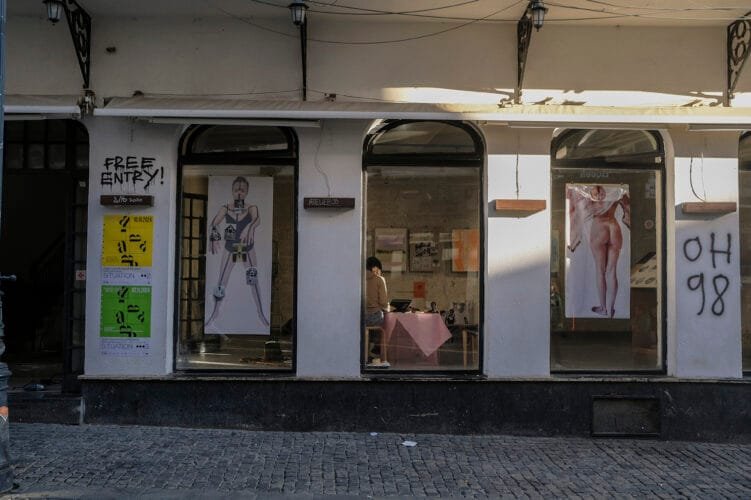
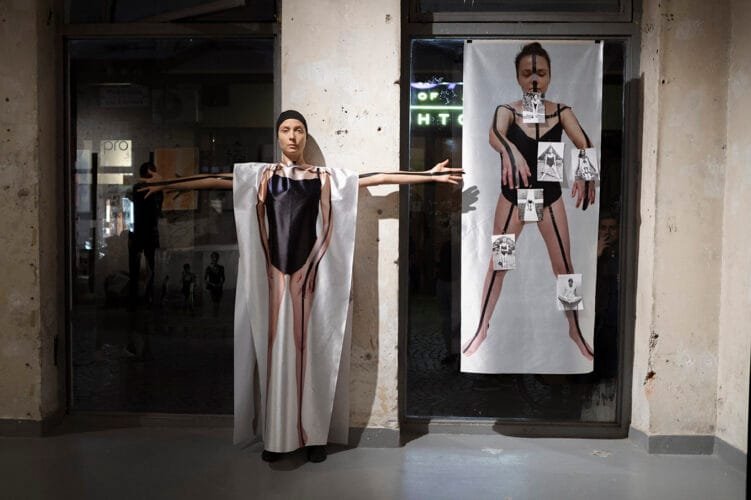
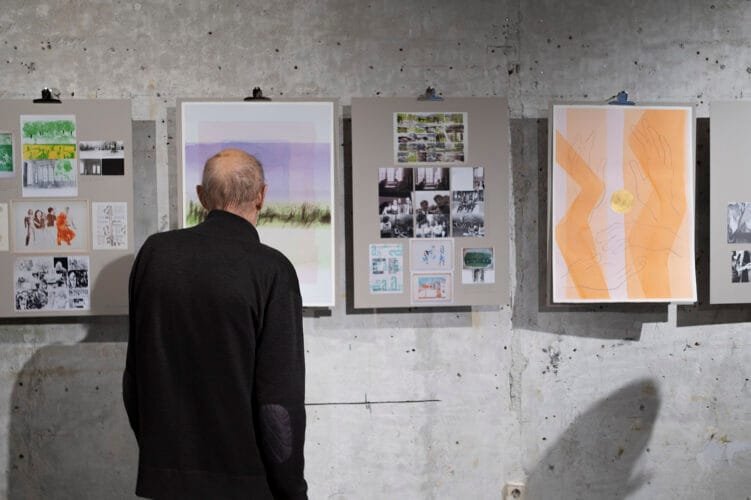
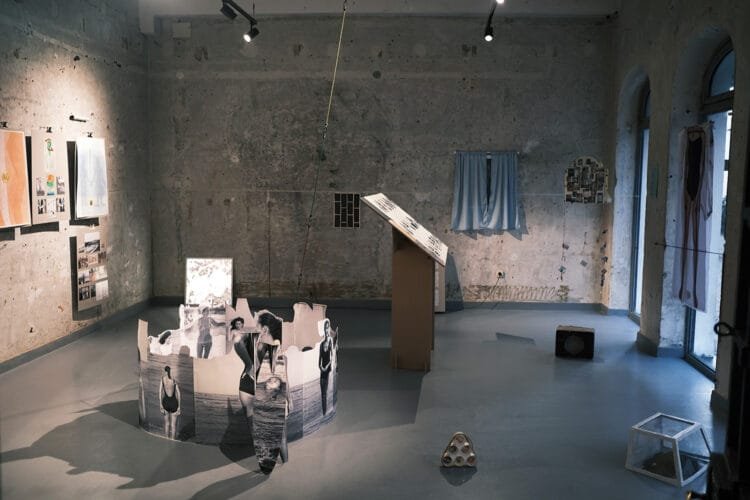
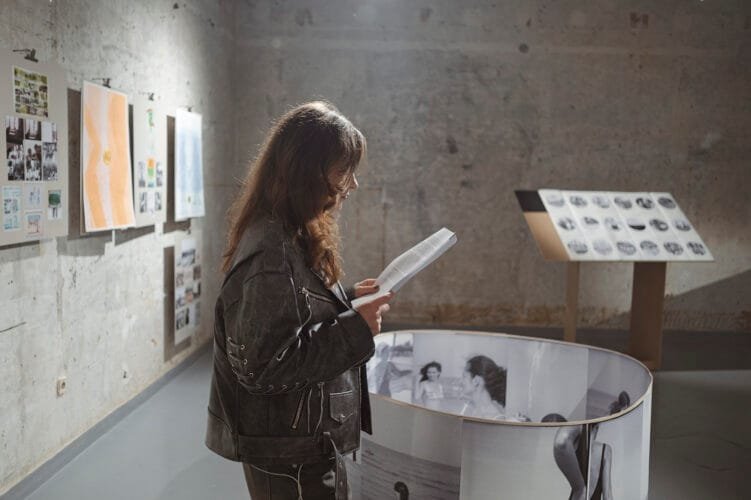
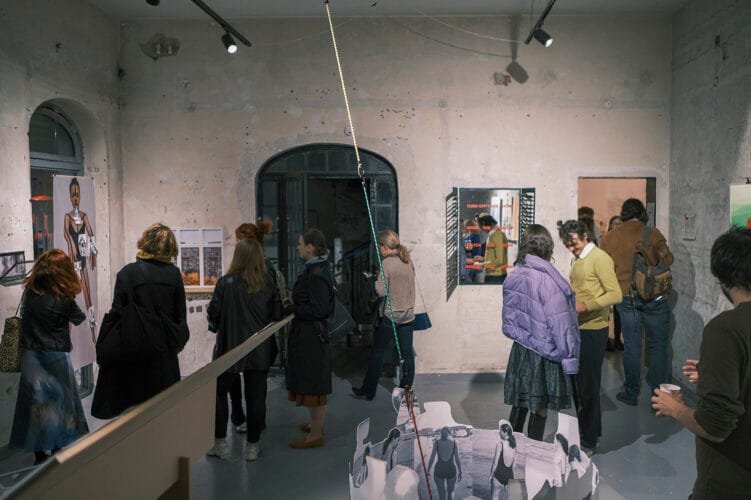
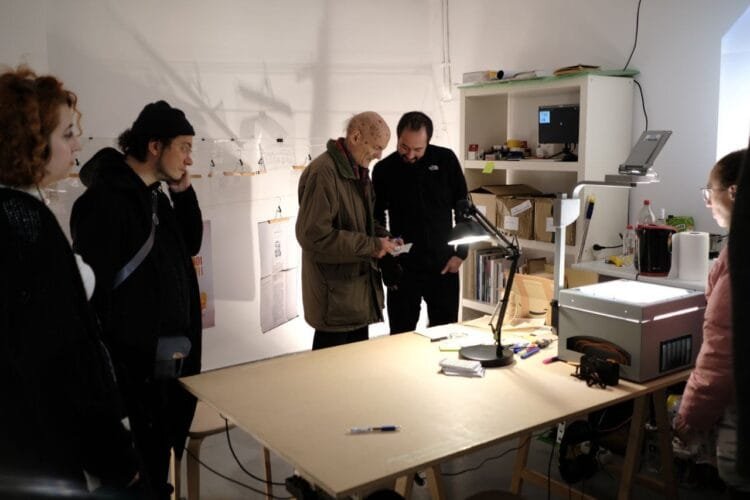

Comments are closed here.